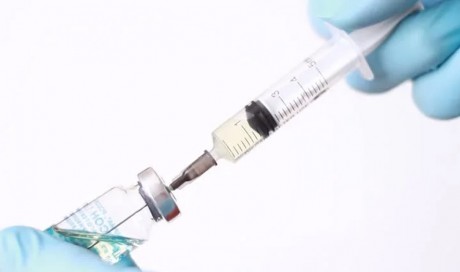The herbal medication devil's claw is "quite a potent anti-inflammatory, working like ibuprofen and similar drugs to inhibit substances that drive inflammation," says Low Dog. She generally starts patients on 1,500 to 2,000 mg twice a day. Look for a brand that has a standardized extract of roughly 50 mg of harpagoside, the active compound. Safety reviews show that the supplement is well tolerated by most people but should be avoided by patients with peptic ulcers or on blood-thinning medications. (Find supplements you can trust here.)
Pain Relievers and Muscle Relaxants
Taking a nonsteroidal anti-inflammatory drug, either OTC (like ibuprofen) or Rx, can ease the distress. Because painful muscle spasms may also accompany a disk herniation, doctors sometimes prescribe muscle relaxants or pain-reducing tricyclic antidepressants. (Just don't make any of these 13 common mistakes you're making with your pain meds!) A caveat: "These won't help with the pain caused by pressure on the sciatic nerve," says A. Nick Shamie, MD, a spokesperson for the American Academy of Orthopaedic Surgeons.
Epidural Steroid Injections
People whose pain doesn't lessen within about a month and who aren't helped by other therapies may find their pain remedied by an x-ray-guided injection of steroid into the lower back near the sciatic nerve, says Raj Rao, MD, a spokesperson for the AAOS. "The hope is to reduce inflammation within that nerve branch," explains Rao. Because of concerns about side effects, such as loss of bone density, the epidural shots are limited to three a year.
Exercise and Physical Therapy

Moving is usually the last thing people dogged by sciatica want to do, but it's important to be physically active. "Lying in bed makes it more likely that the pain will last longer," says Ruppert. "Exercise increases blood flow to the disk and the nerve, helping to get rid of the chemicals causing the inflammation." Take 15- to 20-minute walks. If that hurts too much, give swimming or water aerobics a try; there's not as much pressure on the back when you're in the water, says Ruppert. It may also be worth seeing a physical therapist, who can prescribe stretching exercises to restore flexibility to the back or moves that strengthen core muscles, helping to stabilize the spine and reduce the likelihood of a similar injury.
Surgery
After 4 to 6 weeks of unremitting symptoms, patients may qualify for surgery. The Spine Patient Outcomes Research Trial found that those who had surgery for a herniated disk had greater decreases in pain and disability 3 months afterward than patients who did not. The benefits lasted up to 4 years.
Share This Post














